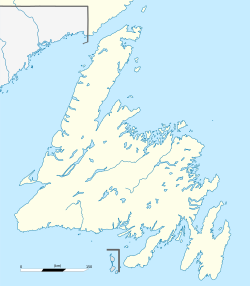Fogo Island | |
|---|---|
Town | |
| Town of Fogo Island | |
 | |
Location of Fogo Island in Newfoundland | |
| Coordinates: 49°39′30″N54°10′57″W / 49.65833°N 54.18250°W [1] | |
| Country | Canada |
| Province | Newfoundland and Labrador |
| Incorporated [3] | March 1, 2011 |
| Population (2021) [4] | |
• Total | 2,117 |
| Time zone | UTC-03:30 (NST) |
| • Summer (DST) | UTC-02:30 (NDT) |
| Area code | 709 |
| Highways | |
| Website | Town of Fogo Island |
Fogo Island is a town located on Fogo Island, the largest of the offshore islands in the province of Newfoundland and Labrador, Canada.

